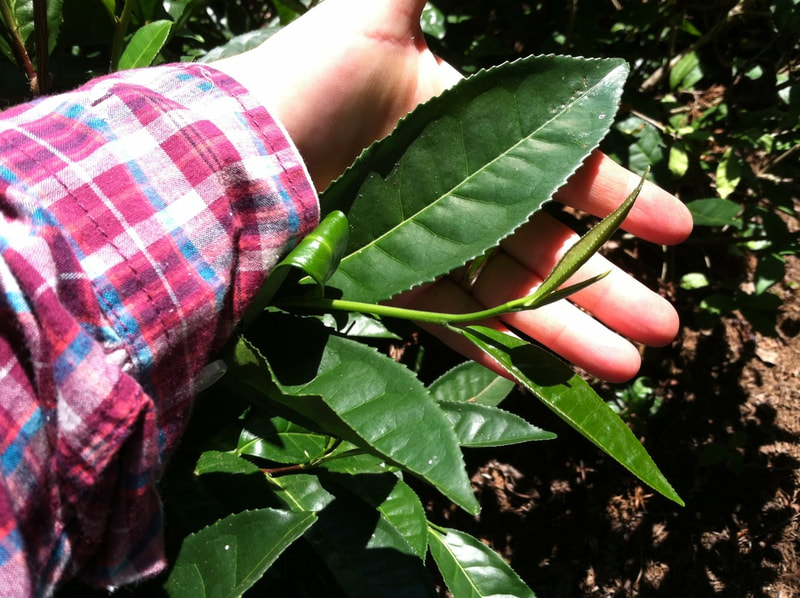Where you can grow tea
- Zone: Tea camellias can be grown anywhere that ornamental camellias grow (typically zones 7A and warmer). Plants will tolerate frost.
- Light: A half-day of sun or more is best. In colder climates, plants will look better if protected from winter sun and winds.
- Soil: Tea plants like well-drained, acidic soil (pH 5.5 or lower); in pots, use a camellia/azalea mix. Make conditioned soil by adding aged compost.
When and how to plant
- Planting out: In early fall or spring, prepare a bed at least 3 by 3 feet, dig a hole 2 feet wider than the root ball, and refill with conditioned soil after centering the plant. Mulch within 4 inches of the stem. Space plants 3 feet apart.
- Growing from seeds: Fresh or stored seeds can be planted in pots or directly in the ground. Cover with a light layer of soil, and keep moist. Germination takes 2-4 weeks
- Fertilizing: Fertilize in early spring with a balanced mix or an organic compost. Use a slow-release source of nitrogen in the summer if you are harvesting heavily, no later than July. Excess fertilizer is not recommended, but rainfall (or watering) in summer encourages new growth.
- Growing in pots: Tea is not a houseplant, but can be kept alive indoors in colder climates. Keep in a cool, humid environment with good light, such as a south facing window or porch. Every few years, plants need to be potted-up.
Pruning tea plants
- Tea plants require 3-5 years of growth prior to a productive harvest. Plants can be kept low for harvesting, but will grow large if you let them.
- First year plants are pruned to 6-10 inches to promote low, spreading branches. Pruning in the next few years continues to develop branching.
- Prune after flowering in late fall through winter to promote spring growth.
Harvesting tea
- Tea is produced from the tender new growth of the plant – the top “two leaves and a bud” (i.e., the youngest leaf – before opening).
- New growth (flushes) occur in spring-summer, and harvesting stimulates new growth – typically up to 4 flushes per year.
- A small handful of fresh shoots will yield a cup of tea. Processed tea dries down to about 20% of the weight of fresh leaves.
- The amount you can harvest from one plant depends on the size, pruning, and growing conditions.
We are constantly learning through our own experiences and from our customers and colleagues. We welcome your questions, suggestions and comments. For more in-depth information, stay tuned for our upcoming book!
Take the survey: In the past few years we have begun surveying growers with a wide range of experience in tea gardening. We’re eager to continue learning what has worked (and hasn’t worked) for you, so if you haven’t already taken the survey, you can share your experiences growing tea here: forms.gle/Lt7WAfAqA26H4wnM6.



